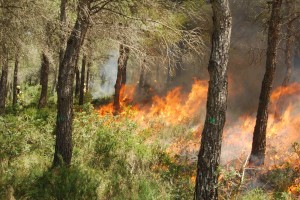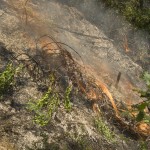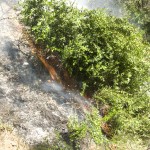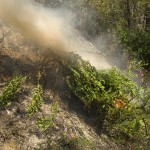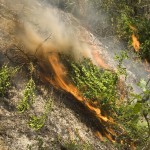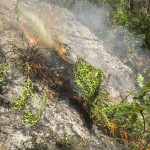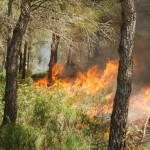Funding Agency: Ministerio de Economía y Competitividad. Gobierno de España
Participating organizations: CTFC, Universidad de la Laguna, Universitat de Barcelona
Duration, from: : 2013 to: 2015
PI: Casals P.
Subproject Researchers: Ríos AI, Taull M, Mora A, Piqué M (AGS), Valor T (AGS), Beltrán M (AGS), González-Olabarria JR (FidBosc)
Project goals:
The ultimate goal of this integrated project is to advance in scientific knowledge to better accommodate prescription windows to successfully implement understory forest burns to both achieve the management objectives and minimize ecosystem damages. The global objectives of FORBURN are:
- To contribute to the comprehensive understanding of burning-driven mechanisms that affect both different pine species, mid-term tree vitality, and forest understory composition and structure.
- To analyze the short-term effects of under burning on soil fertility and some key biotic components of soil
- To analyze the regeneration and functional composition of shrubs and their spatial structure
- To customize fuel models at stand and landscape scales based on different management scenarios under a forest fire prevention scope.
This integrated project (first and second sub-projects) will elucidate mechanisms at the plant functional group level to understand the effects of prescribed burnings on the dominant plants in two different biogeographic and climate regions: Mediterranean and Macaronesian regions. In both, the project will analyze the medium-term (5-10 years) fire effects on both tree vigor and understory structure (in sample plots from 2002 to 2011). Additionally, in both regions we will perform experimental burns under tree canopy to reveal the possible mechanisms derived by short-term fire effects under contrasting conditions of fireline intensity (low and moderate) and two different plant physiological stages ( late fall and early spring).
The project’s findings on the effectiveness and constraints of burning forests will provide an enhancement in both forest management and fuel management to lessen todays’ wildland fire problem. Some representatives of these sectors have already shown a deep interest in this integrated project.
Related Papers:
Valor T, González-Olabarria JR, Piqué M, Casals P. 2017. The effects of burning season and severity on the mortality over time of Pinus nigra ssp. salzmannii (Dunal) Franco and P. sylvestris L. For. Ecol. Manage. doi:10.1016/j.foreco.2017.08.027
Valor T, Ormeño E, Casals P. 2017. Temporal effects of prescribed burning on terpene production in Mediterranean pines. Tree Physiology, doi:10.1093/treephys/tpx069
Casals P, Valor T, Besalú A, Molina D. 2016. Understory fuel load and structure eight to nine years after prescribed burning in Mediterranean pine forests. Forest Ecology and Management, 362:156-168
Valor T, González-Olabarria JR, Piqué M. 2015. Assessing the impact of prescribed burning on the growth of four European pines. Forest Ecology and Management, 343: 101-109
